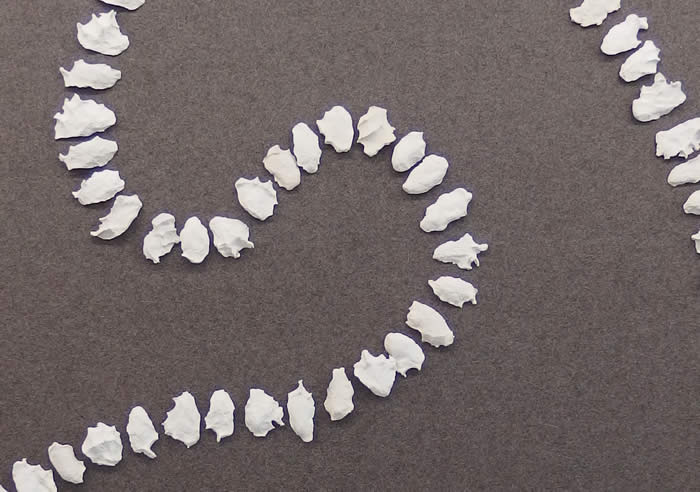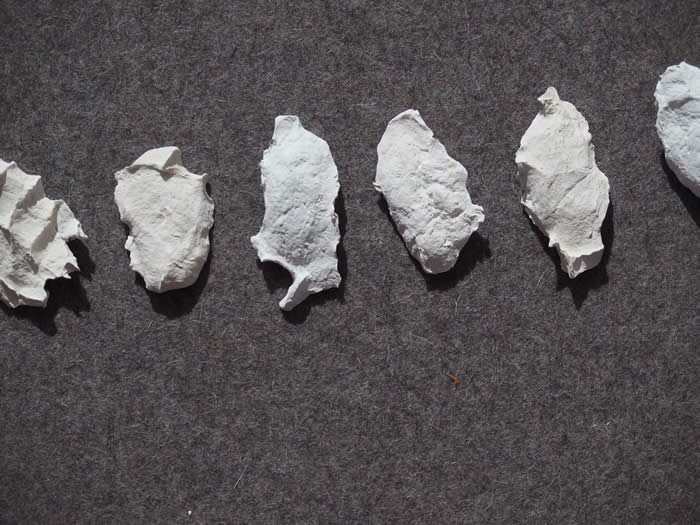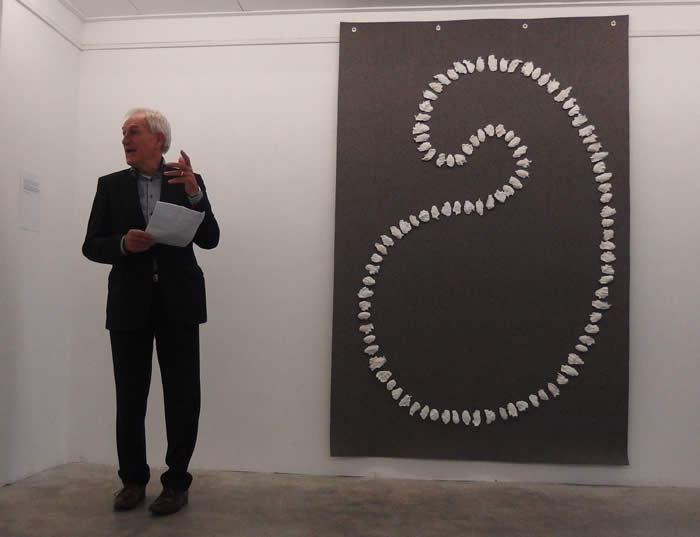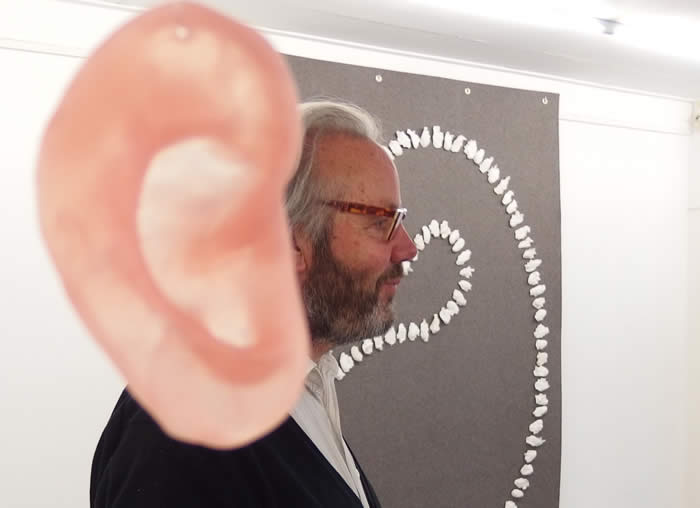Six degrees of separation
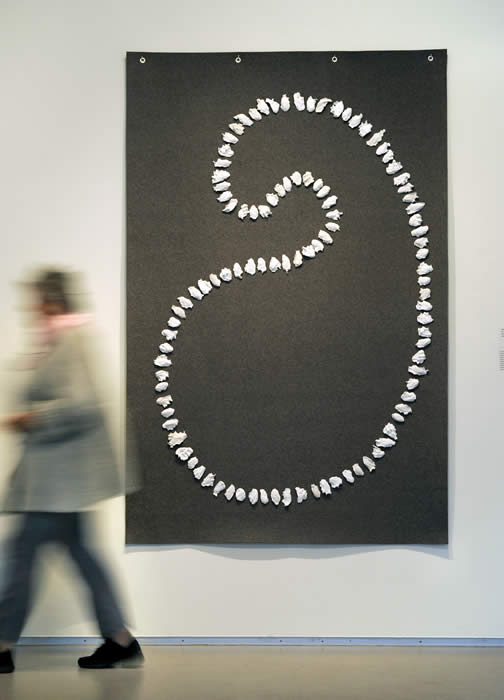
Foto Paul van Riel
Art that connects
Feico Hoekstra, art historian
Rhythm, structure, movement, material, colour – these are the concepts Stef Kreymborg uses to describe her work. They are concepts that articulate features of art, that say something about how a work is constructed, how it looks and what it is made of. Kreymborg’s sizeable oeuvre involving these concepts include a relief work made of rolled-up sheets of music, a letter written on wood with script made of tiny branches, a bowl comprised of stiffened autumn leaves, a felt sculpture of shell shapes and a wall-size textile work composed of handkerchiefs. The basic principle underlying all of these very different artworks is the duplication of a single detail to create a greater whole. At times this leads to a pattern that may be geometric, by necessity placed within a frame because it could otherwise expand into infinity; sometimes it is an autonomous object. But the end result can always be traced back to that single basic premise.
The ultimate point of reference, the source of all art, is of course the artist herself. She duplicates herself as it were in her artworks. In that sense, these works are, in each particular manifestation, a metaphor for the artistic process of creation. However, Kreymborg is becoming increasingly aware that her art is about her position as artist in relation to her audience and at the same time – in a more general sense – about the individual in relation to the group or the individual in relation to the community. In her recent work that awareness has led to her more emphatically seeking contact with her viewers than before. The description of art by the poet Willem Kloos as ‘the most individual expression of the most individual emotion’ is, as far as Kreymborg is concerned, just half the story. Only when art communicates, in other words, when it makes contact with the other, is it complete. Of all substantive concepts, perhaps it is the less fixed or preferably more broadly applicable concept of contact that best typifies Kreymborg’s art.
Artists seek contact with the viewer by conveying a particular vision, experience or fascination. What makes Kreymborg’s art so special is that she also gives expression to the concept itself. How literally she sometimes interprets this is revealed in her work Six Degrees of Separation (2013). The source of inspiration for this work is the eponymous theory. According to this theory developed by scientists, each person is only separated from anyone else on earth via a social network of a maximum of six contacts. In Six Degrees of Separation Kreymborg illustrated this theory by shaking hands with people around her while holding pieces of clay in her palm. The form that the clay took on placed between the hand-shakers concretely represents the contact between herself and the other, and via that other person, ultimately the entire world population. She then constructed a closed chain – the quintessential symbol of eternal connectedness – from all the separate pieces of clay.
Two other artworks that express the essential role of art for Kreymborg as a link between people in a comparably penetrating way were created in a collaborative project, just as Six Degrees of Separation was. She constructed Wailing Wall of Lonely Socks (2011) from dozens of single, unmatched socks – of which everyone has at least one lying around in a cupboard. She received the socks from friends and family as well as from strangers, who through the artwork were brought into contact with both the artist and each other. The same thing happened with Monument of Consolation (2012), in which people from all parts of the country sent Kreymborg a handkerchief that had offered them comfort in times of distress. Through contributing that one lonely sock or that one sorrowful handkerchief to her art project, in these cases too, an extraordinarily powerful symbol of connectedness was created. In other words: by making many from one, and conversely, by making one from many, a negative basic premise was transformed to its positive opposite.
The power of Stef Kreymborg’s art lies precisely in that ability to bridge the distance and to counterbalance contradictions.
